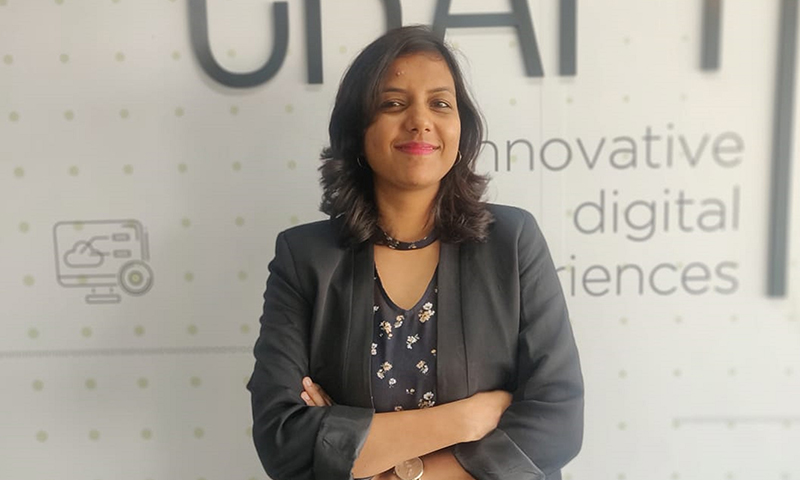Muthumari is the Head of Data Science team at Brillio and specializes in delivering AI/ML use-cases at scale across customer/product/marketing analytics, NLP and vision analytics. In her current role, she works with CXOs to enable their organizations to make accurate data-driven decisions as well as solve ambiguous problems involving unstructured text/image and machine-generated data with tangible business impact. She was recently recognized as a 40 Under 40 Data Scientist in 2021 in India and was also identified as one of the top 10 Data Scientists in 2019, by Analytics India Magazine. This achievement recognizes her as a young leading data scientist, who has successfully transformed data into meaningful insights for the organizations and have key industry expertise.
In your opinion, what have been the most relevant breakthroughs in data science impacting our world in the last 1-2 years, and what trends do you see emerging going forward?
Scaling AI: The predictability and speed unlocked by automating the end-to-end AI/ML Product Lifecycle through ModelOps are now bridging the gap between experimentation and operationalization of AI. This shift truly drives business value at scale.
With the growing influence of artificial intelligence (AI) in our lives, especially after the pandemic, the ethical implications of AI have received attention from various communities. In the banking and healthcare industries, there is a growing need to have tighter governance frameworks to qualify AI-led use-cases and a human-in-the-loop process to address critical pillars of responsible AI, that is, bias, privacy, and explainability.
Sustainability and Raw Materials shortage is a growing concern for multiple customers, primarily supply chain stakeholders. Supply chain processes contribute most to an organization’s indirect emissions. Data & AI can help improve supply chain operations to make them greener and more sustainable. There is much more adoption and evangelization of AI in the supply chain recently.
You have worked across diverse industries such as eCommerce, Media, Manufacturing, Logistics, High Tech. How important is it to have a sound domain knowledge of the business/industry you’re in as a data scientist, and how did you acquire it?
Domain knowledge is a primary skill for every data scientist. Starting from defining the problem formulation and OKR outcomes targeted for a use-case, it is highly critical to understand the flavor of the domain to be able to set ourselves for success. For example, Classic ML problems such as Demand sensing at SKU level for every category (Makeup, Skincare, Merchandise, Baby products, hygiene, books/journals) could be subtly different. Feature stores and models/algorithms applicable based on seasonality patterns also vary & domain context helps. Over a period of time, I have acquired domain knowledge through multiple trainings online, client-specific trainings and also through hands-on projects, solving some of the industry business problems end-to-end. For manufacturing, most of my learnings have come from being inside factories, walking down floors and understanding the entire business process and data collection process end-to-end.
What are the top challenges you currently face as Head of Data Science at Brillio, and how do you go about tackling them?
Finding the right balance of time between expanding technical skills on disruptive technologies with building depth on key industry topics is a challenge I face. I typically start the year with goals on what courses and topics I would like to cover, based on research, project pipeline, and my interactions with industry peers and Gartner/Forrester/Everest experts.
Building & retaining Data Science & AI talent is also on my list of challenges. While we haven’t solved this completely, two ways we have been trying to tackle it is by not compromising on the quality of talent we hire, and ensuring high quality of projects and business problems we solve for our customers. We have a great data science & AI team that brings out the best in each other. This naturally creates an excellent environment for data scientists to iterate and create world-class solutions. They also inspire junior data scientists to get groomed in the right direction.

At what point did you realise that you wanted to pursue a career in data science (data & AI), and how did you get into it?
My passion for numbers started early in life and my natural affinity to numbers and being able to draw sense out of them has enabled me to have a rich and fulfilling career doing something that I truly love. I was fortunate to get into analytics right after my engineering, and my first project was to create a macro-econometrics model for a US Software provider to quantify the impact of the recession on their product sales.
Over 14 years, I have worked on multiple data science & recently AI projects, slowly transitioning from analytics to data science & ML/AI. While AI at scale was still being talked about in 2016, I was a key contributor to the patent on Video Analytics – which was targeted at making sense of the humongous amount of unstructured data created by different media devices and digital content. Currently, I am focused on Intelligent ML Ops and Conversational AI.
Over the years, have you encountered any barriers to your success or growth as a female leader?
I have my share of troughs and crests in my career. I have consciously tried to persevere through difficult situations and continued to work towards my goals, which I have divided into short-term goals and long-term goals, for 1 year and 5 years, respectively. I make it a point to stick to it religiously. It has always been okay for me to slow down for a short period of time. I also take a sabbatical once every few years to reset and rejuvenate, as I think my brain grows tired if I do the same project or same role for lengthy periods at a stretch.
The pandemic was a struggle, balancing schedules at home and work with those of my kids. At one point, I took a month’s break to rethink and do a root-cause analysis on why I feel exhausted, and why it felt like I was working round-the-clock. Importantly, I focused on self-care and self-love, which was so critical back then. At times, we think everything will stagnate if we are not available for a day, and we all must let go from time-to-time, to discover that everything will eventually fall in place!
What are some of the traits that you admire the most amongst the leaders you’ve worked with?
I have had a chance to work with some great leaders at Brillio. Sridhar Krishnamurthy, my manager, focuses a lot on developing teams based on situational leadership theory. I remember seeing a long document for each one of us on what we do well and what areas of our improvement. He diligently updates the record and ensures we are updated regularly about it. The analysis is comprehensive and detailed, and so insightful that I sometimes wonder if he can read my mind!
I am also equally inspired by some of my team members, Indira K and Siddhant Khare, who exhibit amazing capacity for strategic thinking and innovation. They constantly challenge the status quo and push themselves and me to do better every day. This quality not just inspires me, it also inspires the entire team to build a culture of innovation.
Another interesting and uncommon quality I find in our leader, Hemakumar, is that he lives by the saying “Balance Hard Truths with Optimism”. Enduring setbacks while maintaining the ability to show others the way to go forward is a true test of a leader, and he does it with great style and delightful humor.
As one of the Global 40 under 40 Data Leaders, active speaker, and founder of the Women in Data forum; you have had an impressive career trajectory. What is the secret sauce to your success?
I do what I love, am passionate about and I truly believe in. If I don’t love it, I stop doing it. We need to be self-aware about what we truly want and what drives us that extra mile to do better every day. Eventually, as we earn more and can afford what we want and need, a big question will arise on what now/next. Even if you aren’t there yet, it is worthwhile spending a minute thinking about it. Surround yourself with good, opinionated people – this has immensely helped me, as they will remind you to hold your ground irrespective of success or failure. Hobbies to balance right brain and left brain have also helped me get clarity and pushed me to do creative problem solving rather than going by books and other leaders’ solutions.
What are some resources that you would recommend young data scientists to tap onto?
There are a lot of online courses available. I would personally recommend self-paced learnings through Coursera or Udemy [based on specific courses].
Cloud ML and being able to deploy models on cloud is not an optional skill anymore. So, getting at least one cloud ML certification (AWS ML or Azure ML or GCP) is recommended.
Coding is another non-negotiable skill. There are a lot of materials available on standards to code in Python. Unfortunately, it is a myth that data scientists don’t need them.
Good understanding of the underlying assumptions behind an algorithm is again extremely important to understand before using the respective library. This can be focused on one problem at a time during projects, especially for beginners.
What piece of advice would you give to someone who is planning to start a career in data science?
85% of AI projects fail to deliver on their intended promises to business, mainly because data scientists fail to focus on identifying the correct problems to solve for. This is because they don’t spend enough time in assimilating the impact of the models before creating them. The other issue is value quantification, as many data scientists struggle to quantify the value generated through investments in model creations.
So, in addition to learning the technical skills, I would recommend building domain context and problem-solving mindset.




